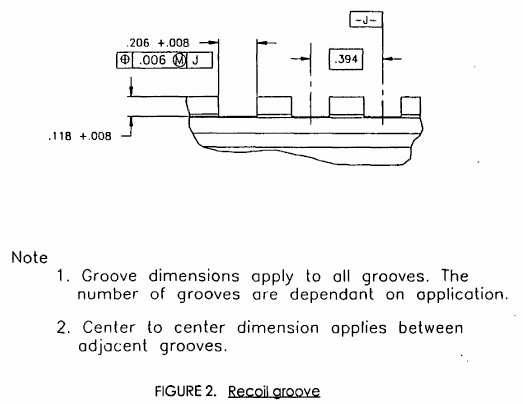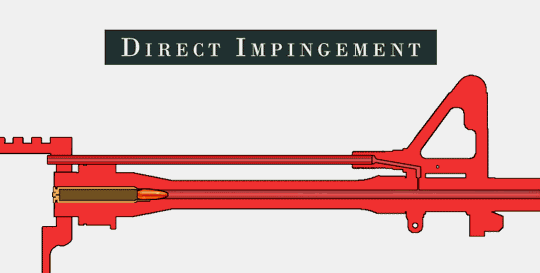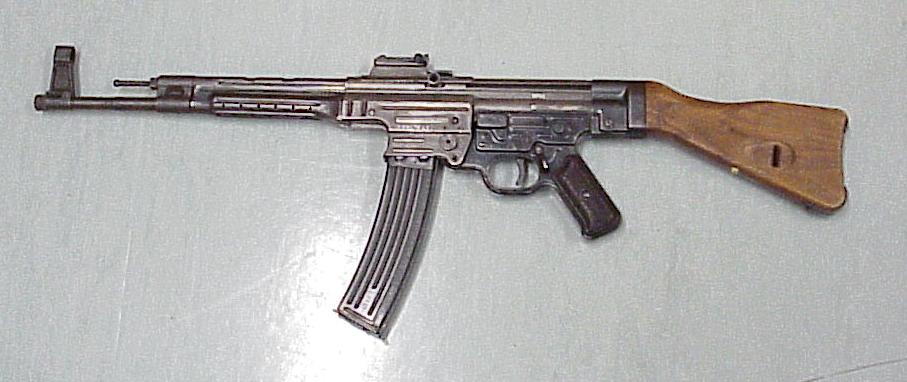|
Lewis Machine And Tool Company
Lewis Machine & Tool Company (LMT) is an American armaments company founded by Karl R. Lewis, in 1980. It manufactures weapon systems, including a variant of the M4 carbine and the M203 grenade launcher. Its products are used by the military forces of the United Kingdom, New Zealand, Estonia, Switzerland, Lebanon and the United States. It formerly produced forged FN FAL receivers for Illinois-based DS Arms. The company founder has several arms related inventions assigned to him. Products Bolt and bolt carrier groups A patented AR-15-pattern is produced with a bolt design featuring a redesigned extractor intended to improve the extraction of cartridges under adverse conditions. The company also produces a redesigned bolt carrier intended to improve the reliable performance of the rifle's “internal piston” system by obtaining a similar timing sequence with 14.5-inch carbine-length barrels compared to 20-inch rifle-length barrels for AR-15-pattern arms. LM308MWS and CQB MR ... [...More Info...] [...Related Items...] OR: [Wikipedia] [Google] [Baidu] |
Private Company
A privately held company (or simply a private company) is a company whose Stock, shares and related rights or obligations are not offered for public subscription or publicly negotiated in their respective listed markets. Instead, the Private equity, company's stock is offered, owned, traded or exchanged privately, also known as "over-the-counter (finance), over-the-counter". Related terms are unlisted organisation, unquoted company and private equity. Private companies are often less well-known than their public company, publicly traded counterparts but still have major importance in the world's economy. For example, in 2008, the 441 list of largest private non-governmental companies by revenue, largest private companies in the United States accounted for $1.8 trillion in revenues and employed 6.2 million people, according to ''Forbes''. In general, all companies that are not owned by the government are classified as private enterprises. This definition encompasses both publ ... [...More Info...] [...Related Items...] OR: [Wikipedia] [Google] [Baidu] |
Picatinny Rail
The 1913 rail (MIL-STD-1913 rail) is an American rail integration system designed by Richard Swan that provides a mounting platform for firearm accessories. It forms part of the NATO standard STANAG 2324 rail. It was originally used for mounting of telescopic sights atop the receivers of larger caliber rifles. Once established as United States Military Standard, its use expanded to also attaching other accessories, such as: iron sights, tactical lights, laser sights, night-vision devices, reflex sights, holographic sights, foregrips, bipods, slings and bayonets. An updated version of the rail is adopted as a NATO standard as the STANAG 4694 NATO Accessory Rail. History Attempts to standardize the Weaver rail mount designs date from work by the A.R.M.S. company and Richard Swanson in the early 1980s. Specifications for the M16A2E4 rifle and the M4E1 carbine received type classification generic in December 1994. These were the M16A2 and the M4 modified wi ... [...More Info...] [...Related Items...] OR: [Wikipedia] [Google] [Baidu] |
Intermediate Cartridge
An intermediate cartridge is a rifle/ carbine cartridge that has significantly greater power than a pistol cartridge but still has a reduced muzzle energy compared to fully powered cartridges (such as the .303 British, 7.62×54mmR, 7.65×53mm Mauser, 7.92×57mm Mauser, 7.7×58mm Arisaka, , or 7.62×51mm NATO), and therefore is regarded as being "intermediate" between traditional rifle and handgun cartridges. As their recoil is significantly reduced compared to full-power cartridges, fully automatic rifles firing intermediate cartridges are relatively easy to control. However, even though they are less powerful than a traditional full-power cartridge, the external ballistics are still sufficient for an effective range of , which covers most typical infantry engagement situations in modern warfare. This allowed for the development of the assault rifle, a type of versatile selective fire small arms that is lighter and more compact than traditional battle rifles that fire f ... [...More Info...] [...Related Items...] OR: [Wikipedia] [Google] [Baidu] |
Box Magazine
A magazine, often simply called a mag, is an ammunition storage and feeding device for a repeating firearm, either integral within the gun (internal/fixed magazine) or externally attached (detachable magazine). The magazine functions by holding several cartridges within itself and sequentially pushing each one into a position where it may be readily loaded into the barrel chamber by the firearm's moving action. The detachable magazine is sometimes colloquially referred to as a " clip", although this is technically inaccurate since a clip is actually an accessory device used to help load ammunition into a magazine or cylinder. Magazines come in many shapes and sizes, from integral tubular magazines on lever-action and pump-action rifles and shotguns, that may hold more than five rounds, to detachable box magazines and drum magazines for automatic rifles and light machine guns, that may hold more than fifty rounds. Various jurisdictions ban what they define as " high-capac ... [...More Info...] [...Related Items...] OR: [Wikipedia] [Google] [Baidu] |
Direct Impingement
Direct impingement is a type of gas operation for a firearm that utilizes gas from a fired cartridge to impart force on the bolt carrier or slide assembly to cycle the action. Firearms using direct impingement are theoretically lighter, more accurate, and less expensive than firearms using cleaner and cooler gas piston systems. Advantages Firearms with a direct impingement design can, in principle, be constructed lighter than piston-operated designs. Because high-pressure gas acts directly upon the bolt and carrier in a direct impingement system, it does not need a separate gas cylinder, piston, and operating rod assembly of a conventional piston-operated system, only requiring a gas tube to channel gas from the barrel back towards the action. This saves weight, lowers manufacturing costs, and reduces the mass of the operating parts, and thereby the wear on mechanical parts due to movement. By removing the gas piston, the potential amount of moving mass is also lowered, decreas ... [...More Info...] [...Related Items...] OR: [Wikipedia] [Google] [Baidu] |
Rotating Bolt
Rotating bolt is a method of locking the breech (or rear barrel) of a firearm closed for firing. Johann Nicolaus von Dreyse developed the first rotating bolt firearm, the "Dreyse needle gun", in 1836. The Dreyse locked using the bolt handle rather than lugs on the bolt head like the Mauser M 98 or M16. The first rotating bolt rifle with two lugs on the bolt head was the Lebel Model 1886 rifle. The concept has been implemented on most firearms chambered for high-powered cartridges since the 20th century. Design Ferdinand Ritter von Mannlicher, who had earlier developed a non-rotating bolt straight-pull rifle, developed the Steyr-Mannlicher M1895, a straight-pull rifle with a rotating bolt, which was issued to the Austro-Hungarian Army. Mannlicher then developed the M1893 auto rifle which had a screw delayed bolt and later the Mannlicher M1900 operated by a gas piston. This was an inspiration for later gas operated, semi-automatic and selective fire firearms (such as th ... [...More Info...] [...Related Items...] OR: [Wikipedia] [Google] [Baidu] |
Gas-operated Reloading
Gas-operation is a system of operation used to provide energy to operate locked breech, autoloading firearms. In gas-operation, a portion of high-pressure gas from the cartridge being fired is used to power a mechanism to dispose of the spent case and insert a new cartridge into the chamber. Energy from the gas is harnessed through either a port in the barrel or a trap at the muzzle. This high-pressure gas impinges on a surface such as a piston head to provide motion for unlocking of the action, extraction of the spent case, ejection, cocking of the hammer or striker, chambering of a fresh cartridge, and locking of the action. History The first mention of using a gas piston in a single-shot breech-loading rifle comes from 1856, by the German Edward Lindner who patented his invention in the United States and Britain. In 1866, Englishman William Curtis filed the first patent on a gas-operated repeating rifle but subsequently failed to develop that idea further. Between 1883 ... [...More Info...] [...Related Items...] OR: [Wikipedia] [Google] [Baidu] |
Estonian Defence League
The Estonian Defence League (, 'Defence League') is a voluntary paramilitary national defence organization of the Republic of Estonia, under management of the Ministry of Defence. Its aim is to guarantee the preservation of the independence and sovereignty of the state, the integrity of its land area and its constitutional order. The Defence League possesses arms and engages in military exercises, fulfilling the tasks given to it by the law. The organization is divided into 4 Territorial Defence Districts that consist of 15 Defence League regional units, called malevs, whose areas of responsibility mostly coincide with the borders of Estonian counties. Mission The Defence League is a voluntary military national defence organisation, which acts in the area of government of the Ministry of Defence. The Defence League possesses arms and engages in military exercises. The main goal of the Defence League is, on the basis of the citizens’ free will and initiative, to enhance the re ... [...More Info...] [...Related Items...] OR: [Wikipedia] [Google] [Baidu] |
Estonian Defence Forces
The Estonian Defence Forces () is the unified military force of the Republic of Estonia. The Estonian Defence Forces consists of the Estonian Land Forces, the Estonian Navy, the Estonian Air Force, and the paramilitary Estonian Defence League. The national defence policy aims to guarantee the preservation of the independence and sovereignty of the state and maintain the integrity of its land area, territorial waters, airspace, and constitutional order. Its main goals remain the development and maintenance of a credible capability to defend the nation's vital interests and of the defence forces in a way that ensures their interoperability with the armed forces of NATO and European Union member states in order to participate in the full range of missions for these military alliances. History The Estonian Defence Forces has its origins linked to the Estonian War of Independence. After the first phase of the German Revolution in November 1918 ended the German occupation i ... [...More Info...] [...Related Items...] OR: [Wikipedia] [Google] [Baidu] |
New Zealand Defence Force
The New Zealand Defence Force (NZDF; , "Line of Defence of New Zealand") is the three-branched military of New Zealand. The NZDF is responsible for the protection of the national security of New Zealand and its realm, promoting its interests, safeguarding peace and security, as well as supporting peacekeeping and humanitarian missions. It consists of three services: the Royal New Zealand Navy (RNZN), the New Zealand Army and the Royal New Zealand Air Force (RNZAF), as well as tri-service components. As of June 2024, the NZDF has a strength of 15,383 employees, consisting of 10,037 regular force personnel, 3,281 reserve force personnel and 3,294 civilian members. It is supported by the New Zealand Ministry of Defence (MOD) and is commanded by the Chief of Defence Force (CDF). The principal roles and tasks expected of the NZDF is to provide a combat capable force to defend New Zealand's sovereign territory, and protect critical lines of communication. To provide civil defence ... [...More Info...] [...Related Items...] OR: [Wikipedia] [Google] [Baidu] |
Battle Rifle
A battle rifle is a service rifle chambered to fire a fully powered cartridge. The term "battle rifle" is a retronym created largely out of a need to differentiate automatic rifles chambered for fully powered cartridges from automatic rifles chambered for intermediate cartridges, which were later categorized as assault rifles. Battle rifles were most prominent from the 1940s to the 1970s, when they were used as service rifles. While modern battle rifles largely resemble modern assault rifle designs, which replaced battle rifles in most roles, the term may also describe older military full-power semi-automatic rifles such as the M1 Garand, SVT-40, Gewehr 41, Gewehr 43, Type 4 rifle, Type 4, FN Model 1949, and MAS-49 rifle, MAS-49. History World War I Semi-automatic First examples of semi-automatic fully powered-cartridge rifles used in World War I are the Meunier rifle, Meunier A6, Fusil Automatique Modèle 1917 in 8×50mmR Lebel and the Winchester Model 1910 in .401 Wincheste ... [...More Info...] [...Related Items...] OR: [Wikipedia] [Google] [Baidu] |
Assault Rifle
An assault rifle is a select fire rifle that uses an intermediate cartridge, intermediate-rifle cartridge and a Magazine (firearms), detachable magazine.C. Taylor, ''The Fighting Rifle: A Complete Study of the Rifle in Combat'', F.A. Moyer ''Special Forces Foreign Weapons Handbook'', R.J. Scroggie, F.A. Moyer ''Special Forces Combat Firing Techniques'', Musgave, Daniel D., and Thomas B. Nelson, ''The World's Assault Rifles'', vol. II, The Goetz Company, Washington, D.C. (1967): 1 Assault rifles were first put into mass production and accepted into widespread service during World War II. The first assault rifle to see major usage was the German StG 44, a development of the earlier Maschinenkarabiner 42(H), Mkb 42.''Firearms: The Life Story of a Technology'', by Roger Pauly. Greenwood Publishing Group. 2004. pp. 145–146 [...More Info...] [...Related Items...] OR: [Wikipedia] [Google] [Baidu] |








